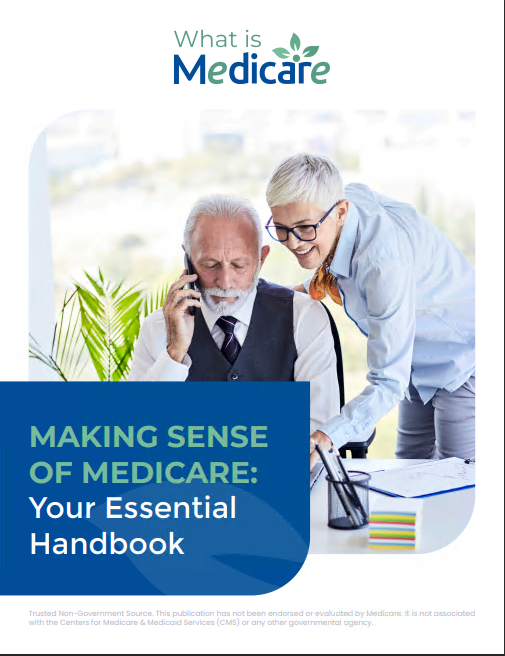Key Takeaways
-
Medicare Part C (also called Medicare Advantage) can offer extra benefits beyond Original Medicare, but many of those come with hidden limitations that aren’t always obvious upfront.
-
Restrictions in provider networks, prior authorizations, and potential annual cost spikes may lead you to reconsider whether these plans truly meet your long-term healthcare needs.
Understanding Medicare Part C: The Basics
Medicare Part C is an alternate way to receive your Medicare benefits through private insurance companies that contract with Medicare. Instead of enrolling solely in Original Medicare (Parts A and B), you can choose to receive all your Medicare-covered services through a Medicare Advantage plan. These plans must provide at least the same level of coverage as Original Medicare but may come with additional features.
These extra features often include benefits like dental, vision, hearing, and fitness programs. In many cases, plans also offer bundled prescription drug coverage, creating an all-in-one structure. However, these advantages come with terms and conditions that can affect your access to care, overall flexibility, and potential long-term costs.
Before deciding, it’s important to examine not only what Medicare Part C includes but also how it operates behind the scenes. Coverage isn’t just about what you gain—it’s also about what you may have to give up.
What Medicare Part C Must Include
To meet federal requirements, every Medicare Advantage plan must offer:
-
All benefits under Medicare Part A (inpatient hospital stays, skilled nursing facility care, hospice care, and some home health services)
-
All benefits under Medicare Part B (doctor visits, outpatient care, preventive services, medical equipment, and more)
In addition, most plans go beyond the minimum by bundling:
-
Preventive dental care, including cleanings and x-rays
-
Vision exams and annual glasses or contact lenses
-
Hearing screenings and hearing aids
-
Wellness services like gym memberships or fitness rewards programs
-
Health-related transportation or post-hospital meal delivery
While these features are appealing, each comes with its own usage limits, caps, or restrictions that may not be clear until you try to access them.
What You Might Overlook at First
When choosing a Medicare Advantage plan, it’s easy to focus on what looks attractive: extra benefits and the convenience of combining services under one umbrella. But plans vary widely, and the fine print often reveals restrictions that affect your experience with care.
Limited Provider Networks
Most Medicare Part C plans operate under managed care models, primarily:
-
Health Maintenance Organizations (HMOs): Require you to select a primary care doctor and get referrals for specialists. You must use in-network providers except for emergencies.
-
Preferred Provider Organizations (PPOs): Offer more flexibility with providers, including some out-of-network care, but typically with higher out-of-pocket costs.
If you receive care outside your plan’s network or without required authorizations, you may be responsible for the full cost. This limitation can be especially problematic if you live in rural areas or frequently travel.
Prior Authorization Requirements
Medicare Advantage plans often require approval before you can get certain services or medications. Prior authorization applies to imaging tests, hospital admissions, skilled nursing stays, and even high-cost prescriptions. Delays or denials are possible, even for medically necessary procedures, which can create frustration and disrupt your treatment timeline.
In contrast, Original Medicare generally allows broader access to services without these layers of review.
The Out-of-Pocket Cost Picture in 2025
Medicare sets an annual limit on your out-of-pocket expenses under Medicare Advantage. In 2025, that limit is $9,350 for in-network care and $14,000 for combined in- and out-of-network services. Once you hit that threshold, the plan pays 100% of your covered healthcare costs for the remainder of the year.
While this cap is valuable protection, many enrollees don’t reach it. Instead, they experience the cumulative impact of:
-
Copays for office visits, specialists, and urgent care
-
Coinsurance for procedures or durable medical equipment
-
Deductibles and tiered drug costs
Original Medicare doesn’t have an out-of-pocket maximum, but when paired with a Medigap plan, it can provide highly predictable cost-sharing. With Medicare Advantage, what seems affordable upfront may become costly over time.
Prescription Drug Coverage Has Changed
Most Medicare Advantage plans include drug coverage equivalent to Medicare Part D. In 2025, an important update has reshaped how out-of-pocket costs work:
-
A $2,000 annual out-of-pocket cap applies to all standard Part D drug coverage.
-
Once this threshold is met, your plan must cover 100% of the cost for covered prescriptions.
This change can significantly reduce the financial burden for those taking expensive medications. However, plans still use tiered formularies, meaning that some prescriptions could cost more than others, and not all drugs are covered. It remains crucial to verify that your medications are included and not subject to high-tier pricing or step therapy requirements.
Supplemental Benefits Can Be Misleading
Medicare Advantage plans promote many extras, but these features often come with strings attached.
-
Dental coverage might only include exams and two cleanings a year, with limits on procedures like fillings, extractions, or root canals.
-
Vision benefits typically offer a routine exam and a limited allowance for eyewear, often with long intervals between replacement.
-
Hearing aid coverage may include an annual test and discount pricing, but you could still be left with large out-of-pocket costs.
-
Transportation services might be capped at a set number of trips or only offered under specific conditions, like post-surgical care.
These services are beneficial, but they’re rarely designed to fully replace standalone insurance or out-of-pocket payment for more complex needs.
Enrollment Timelines You Need to Know
Knowing when to enroll—and when you can make changes—is vital to avoiding penalties and ensuring uninterrupted coverage.
-
Initial Enrollment Period (IEP): Your 7-month window includes the 3 months before your 65th birthday, your birthday month, and the 3 months after. You can sign up for Part C during this time.
-
Annual Enrollment Period (AEP): Held every year from October 15 to December 7. You can switch from Original Medicare to Part C, or vice versa, or change Advantage plans.
-
Medicare Advantage Open Enrollment Period (MA OEP): From January 1 through March 31. This is for people already enrolled in a Medicare Advantage plan to switch plans or return to Original Medicare.
-
Special Enrollment Period (SEP): Triggered by events like moving to a new area, losing employer coverage, or gaining Medicaid eligibility. SEPs allow you to change your plan outside of the standard periods.
Missing these windows could leave you stuck with a plan that doesn’t fit your needs for up to a year.
You May Lose Certain Flexibilities
Once you choose a Medicare Advantage plan, it’s not always easy to go back to Original Medicare with the full safety net of Medigap. Here’s why:
-
Outside of certain guaranteed-issue rights, Medigap insurers may require you to answer health questions before granting coverage.
-
Denials or increased premiums can occur if you’ve had recent health issues.
-
States differ in how lenient they are about re-entry into Medigap, with some offering trial rights and others offering no protection after your first year.
This is one of the biggest long-term implications of enrolling in Part C: your future options may become limited.
Comparing Coverage Isn’t Always Easy
Each Medicare Advantage plan has its own structure, which may include:
-
Multiple copay tiers for office visits (primary vs. specialist)
-
Separate deductibles for medical and drug benefits
-
Limits on therapy sessions or outpatient mental health visits
-
Step therapy and quantity limits on prescription drugs
These variables can change from year to year, so it’s important to review the Annual Notice of Change sent every fall. Even small changes in plan design can lead to significant increases in your personal healthcare costs.
How Medicare Part C Treats Emergency and Urgent Care
Every Medicare Advantage plan must cover emergency and urgent care anywhere in the U.S., regardless of network participation. But that protection only lasts as long as your care is deemed emergency or urgent.
Once stabilized, continued treatment must follow your plan’s rules. If you need follow-up care while away from your plan’s home service area, you could face limited options or steep costs. Travelers should confirm whether their plan offers multi-state or national provider networks before enrolling.
Some People Benefit More Than Others
Medicare Part C is not one-size-fits-all. It tends to work well for those who:
-
Are generally healthy and use few medical services
-
Prefer managed care and don’t mind network restrictions
-
Value bundled benefits and simplified billing
You may want to think twice if:
-
You have a chronic condition requiring frequent specialist visits
-
You prefer to choose your own doctors and avoid referrals
-
You dislike waiting for plan approval before getting tests or procedures
The key is to weigh how your current and projected healthcare needs align with what Medicare Advantage plans actually provide.
Reconsider the Value, Not Just the Price
Premiums for Medicare Advantage plans are often lower than the combined cost of Original Medicare and a Medigap plan. But that doesn’t mean you’ll save money overall.
-
Frequent use of services can add up quickly through copays and coinsurance
-
Drug tiers may change each year, altering your medication costs
-
Hospital stays and surgeries may incur significant daily copays
Look at the full financial picture. Estimate what you might spend in a year with each type of coverage—not just the monthly premium.
The Fine Print Matters
Before enrolling in any Medicare Advantage plan:
-
Make a list of your current providers and confirm they are in the network
-
Search the drug formulary for your prescriptions and note tier levels
-
Read the prior authorization policy to see how often it’s required
-
Study the plan’s deductible, coinsurance rates, and annual limit
-
Examine the Evidence of Coverage for exclusions and benefit limits
These steps can protect you from choosing a plan that looks good on paper but doesn’t meet your real-world needs.
It All Comes Down to What You Value
If you want convenience, consolidated coverage, and extra services, Medicare Part C can be a compelling option. But if you prioritize freedom of provider choice, fewer administrative rules, and long-term predictability, you may find Original Medicare with Medigap to be a better fit.
Consider how you use healthcare today, how you expect to use it in the future, and how much effort you’re willing to put into navigating plan rules.
Weighing Your Options with Confidence
Medicare Part C isn’t inherently better or worse than Original Medicare—it’s simply different. The best decision is one made with clear eyes, realistic expectations, and a full understanding of the trade-offs involved.
If you’re not sure which path to choose or how plan changes affect you, talk to a licensed agent listed on this website who can walk you through your options and provide personalized recommendations.









